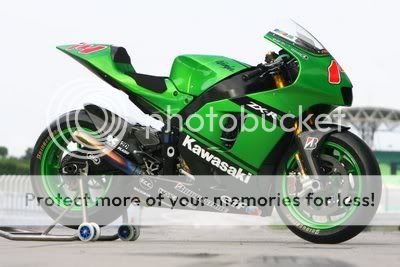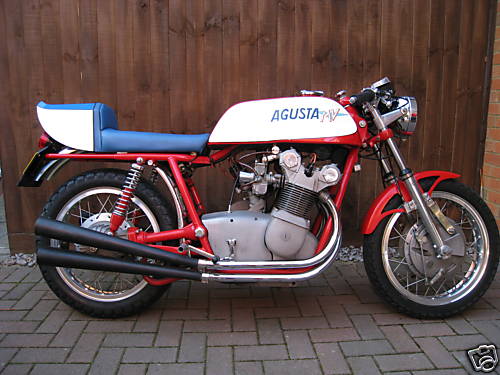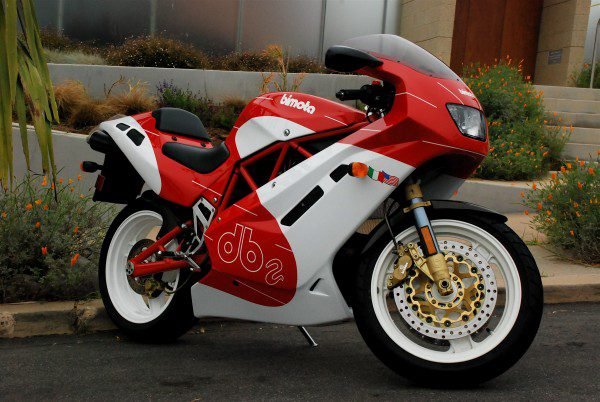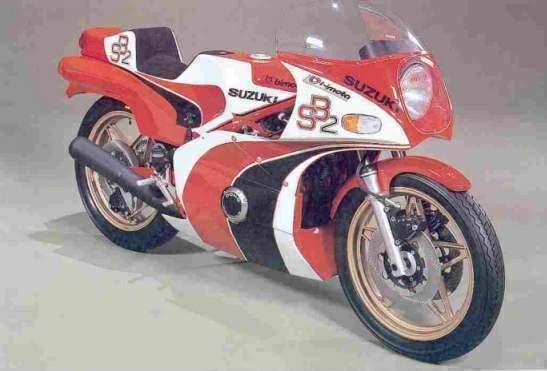



 While the major manufacturers Japanese bike spent the late 60 and 70 in pushing the envelope as far as strength, speed and expressed concern, and European manufacturers who seek a combination of power and handling. The bikes such as the European 750S3 Guzzi Moto down on power compared to some Japanese rivals, but could overtake them in the circumstances is still the real world, especially where the acquisition of this issue. One of the issues of the day, however, that the lack of relative strength means that they can be slow from the beginning of the permanent.
While the major manufacturers Japanese bike spent the late 60 and 70 in pushing the envelope as far as strength, speed and expressed concern, and European manufacturers who seek a combination of power and handling. The bikes such as the European 750S3 Guzzi Moto down on power compared to some Japanese rivals, but could overtake them in the circumstances is still the real world, especially where the acquisition of this issue. One of the issues of the day, however, that the lack of relative strength means that they can be slow from the beginning of the permanent. However, it was with the likes of Giacomo Agostini, sweeping all before him with Agusta medium, another European bike, and the demand for these machines alien based on race are high. Ducati was held in the Gulf of Agostini in 1972, however, when a pair of V-Twin 750 Ducatis came first and the second at Imola 200. This victory inspired by Ducati for the production of bicycles 25 Imola based on the legal road in 1973 and followed this up with the Super Sport 750.
However, it was with the likes of Giacomo Agostini, sweeping all before him with Agusta medium, another European bike, and the demand for these machines alien based on race are high. Ducati was held in the Gulf of Agostini in 1972, however, when a pair of V-Twin 750 Ducatis came first and the second at Imola 200. This victory inspired by Ducati for the production of bicycles 25 Imola based on the legal road in 1973 and followed this up with the Super Sport 750. Ducati produced and 900SS. The engine Ducati 860GT 900SS on the basis of the unity of stroke, which kept the 74.4mm of 750, but with increased tolerance of 86mm to give a total capacity of 864cc 79bhp produced in the forearm. To maintain the traditional engine 90 degrees V-Twin with desmodromic valves and large-scale 40mm Dell'Orto carburetors. It was a wonderful, both visually and in terms of performance. Keep the long wheelbase bike stable at high speeds, and was a feature of Italian bikes at that time. No electric start, clip on handlebars, rear set foot pegs and a beautiful gift means half that this is a replica of the real race, who went and handled, as well as it looks - in black with gold trim was fantastic.
Ducati produced and 900SS. The engine Ducati 860GT 900SS on the basis of the unity of stroke, which kept the 74.4mm of 750, but with increased tolerance of 86mm to give a total capacity of 864cc 79bhp produced in the forearm. To maintain the traditional engine 90 degrees V-Twin with desmodromic valves and large-scale 40mm Dell'Orto carburetors. It was a wonderful, both visually and in terms of performance. Keep the long wheelbase bike stable at high speeds, and was a feature of Italian bikes at that time. No electric start, clip on handlebars, rear set foot pegs and a beautiful gift means half that this is a replica of the real race, who went and handled, as well as it looks - in black with gold trim was fantastic. MV Agusta's name will forever be associated with Italian racing legend Giacomo Agostini.
MV Agusta's name will forever be associated with Italian racing legend Giacomo Agostini. However, the problem was that Count Domenico Agusta, founder and owner of the company was a top racing fan. His bikes are not designed to be modified to make them legal for road use, and nor did he want everyone racing as a privateer against his seemingly unbeatable machines with a bike his company had produced.
However, the problem was that Count Domenico Agusta, founder and owner of the company was a top racing fan. His bikes are not designed to be modified to make them legal for road use, and nor did he want everyone racing as a privateer against his seemingly unbeatable machines with a bike his company had produced. Unfortunately two things combined with the wannabe racers Agostini disappoint.
Unfortunately two things combined with the wannabe racers Agostini disappoint. The late 1960's and 1970's saw the big Japanese bike manufacturers compete to see who could produce motorcycles with more and more power. Sure, Japanese bikes were exciting, but sometimes the lack of treatment is their second best of the more complete packages to offer from European manufacturers.
The late 1960's and 1970's saw the big Japanese bike manufacturers compete to see who could produce motorcycles with more and more power. Sure, Japanese bikes were exciting, but sometimes the lack of treatment is their second best of the more complete packages to offer from European manufacturers. The three founders of the company went by the names of Bianchi, Morri and Tamburini, then Bi-mo-ta. Indeed, Mr. Tamburini much associated with modern times, the driving force behind the Ducati 916 and MV Agusta F4.
The three founders of the company went by the names of Bianchi, Morri and Tamburini, then Bi-mo-ta. Indeed, Mr. Tamburini much associated with modern times, the driving force behind the Ducati 916 and MV Agusta F4. This was a four cylinder in-line machine that bored to 850cc and fitted with high compression pistons. Bigger carburetors and camshafts stage 3 Yoshimura increased capacity of 60 to 78bhp. The frame is constructed from steel tube and the machine wearing a wrap around cockpit and full body kit, which was a first on the road bikes of the day.
This was a four cylinder in-line machine that bored to 850cc and fitted with high compression pistons. Bigger carburetors and camshafts stage 3 Yoshimura increased capacity of 60 to 78bhp. The frame is constructed from steel tube and the machine wearing a wrap around cockpit and full body kit, which was a first on the road bikes of the day. The frame was therefore only 10kg! Much of the external parts are made of super bikes lightweight aircraft grade alloy - in common superbikes of today, but this is where it started.
The frame was therefore only 10kg! Much of the external parts are made of super bikes lightweight aircraft grade alloy - in common superbikes of today, but this is where it started. After "power is everything" attitude of the Japanese motorcycle manufacturers in the late 60s and 1970s, 1980s witnessed the legislation and to address possible concerns as issues that need to be addressed. Whether in terms of legislation and expressed concern, manufacturers began to realize that it can legitimize some motorcycles from the roads, especially when you consider the previously unheard of power to weight ratios available to the people only 17 years of age experienced the way a bit.
After "power is everything" attitude of the Japanese motorcycle manufacturers in the late 60s and 1970s, 1980s witnessed the legislation and to address possible concerns as issues that need to be addressed. Whether in terms of legislation and expressed concern, manufacturers began to realize that it can legitimize some motorcycles from the roads, especially when you consider the previously unheard of power to weight ratios available to the people only 17 years of age experienced the way a bit. Although the framework of GSX1100E and traditional to some extent, with the framework of two-sided tubular steel and twin rear shock absorbers, and the engine was given by the edge.
Although the framework of GSX1100E and traditional to some extent, with the framework of two-sided tubular steel and twin rear shock absorbers, and the engine was given by the edge. GSX1100E and kept all the agreements of the day, power and limited to 100bhp. However, the quarter-mile in 11.5 seconds and stand up to a top speed of more than 140mph 100bhp means that or not, this device can offer. Not only that, but the handover of power and along the way through the division of power with any patches "flat".
GSX1100E and kept all the agreements of the day, power and limited to 100bhp. However, the quarter-mile in 11.5 seconds and stand up to a top speed of more than 140mph 100bhp means that or not, this device can offer. Not only that, but the handover of power and along the way through the division of power with any patches "flat".